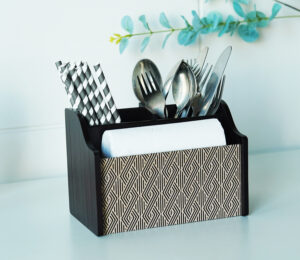Understanding the Importance of the Muslim Hijab and Step-by-Step Hijab Tutorials
The Muslim hijab is more than just a piece of fabric; it holds significant religious, cultural, and personal meaning for Muslim women across the world. Rooted in Islamic teachings, the hijab symbolizes modesty, privacy, and morality. In recent years, the hijab has also become a fashion statement, with women showcasing their creativity in wearing this traditional headscarf.
In this blog post, we will delve into the importance of the hijab in Islam, its cultural relevance, and provide a simple hijab tutorial to help those new to the practice or anyone looking for fresh styling tips.
The Religious and Cultural Significance of the Muslim Hijab
The Muslim hijab is an expression of faith and devotion in Islam, as it is derived from the teachings in the Qur’an. The concept of modesty in Islam extends beyond physical appearance and includes the idea of modest behavior and thought. In particular, women are encouraged to cover their hair and body in a way that reflects modesty and humility in the presence of men who are not immediate family members.
While the hijab is a personal choice for many women, it has often sparked discussions around freedom, feminism, and identity. Wearing the hijab is a personal journey that varies from one woman to another, depending on her spiritual connection, cultural background, and personal preferences.
The hijab also serves as a symbol of cultural identity for many Muslim women living in different parts of the world. Whether it’s a vibrant headscarf adorned with intricate patterns or a simple one-color hijab, it represents a rich cultural heritage that speaks to a history of resilience, strength, and pride.

Types of Hijab Styles
Before diving into the hijab tutorial, it’s helpful to know that there are different styles of hijab, each offering unique looks. These styles range from the casual everyday hijab to more elaborate versions worn at special events or occasions.
- Shayla: This is a long, rectangular scarf that is draped over the shoulders. It is often wrapped around the head and neck, offering a sleek and simple look.
- Al-Amira: This is a two-piece hijab made from a fitted cap and a tube-like scarf that goes over it. This style is often favored for its convenience and ease of use.
- Turban Hijab: This is a modern and trendy style in which the scarf is wrapped around the head, leaving the neck exposed. It’s often worn by younger women or for fashion-forward occasions.
- Chador: A full-body cloak worn primarily in Iran, this style is a more traditional look, offering full coverage from head to toe.
- Khimar: This long veil covers the head, neck, and shoulders but leaves the face uncovered. It provides a modest yet graceful look.
Now that we’ve explored some common hijab styles, let’s walk through a hijab tutorial to help you create a classic, everyday look.
Step-by-Step Hijab Tutorial
Whether you’re new to wearing the Muslim hijab or you’re simply looking for new ways to style your headscarf, this basic hijab tutorial can help you achieve an elegant yet effortless look.
Step 1: Choose the Right Scarf
To start, select a scarf that complements your outfit and is comfortable to wear. Light fabrics like cotton or jersey are great for everyday wear, as they allow for breathability and flexibility. You can also opt for chiffon or silk for more formal occasions.
Step 2: Place the Scarf Over Your Head
Position the scarf over your head, making sure one side is longer than the other. Adjust the scarf so that the shorter side covers most of your head while the longer side is left hanging down.
Step 3: Secure the Scarf
Use a hijab pin or safety pin under your chin to secure the scarf in place. Be sure not to make it too tight, as comfort is key, especially if you plan to wear it all day. The pin should hold both sides of the scarf together without creating discomfort.
Step 4: Wrap the Longer Side Around
Take the longer end of the scarf and wrap it around your head, bringing it to the other side. You can either leave it loose for a more relaxed look or tuck it under the shorter side for a neater appearance.
Step 5: Adjust and Pin
Once you’ve wrapped the scarf, adjust it to ensure that your hair and neck are covered appropriately. You can also secure it with additional pins if needed, or simply let the fabric drape over your shoulders for a casual finish.
Step 6: Add Final Touches
You can accessorize your hijab with decorative pins or brooches to add some flair to your look. Depending on the occasion, you can also play around with different scarf materials and colors to suit your style.
Tips for Styling Your Hijab
- Face Shape: If you have a round face, you might want to pull the scarf a bit back from your forehead to elongate your face. For oval-shaped faces, almost any style will suit you.
- Occasion: Use lighter fabrics and simpler styles for daily wear, while you can experiment with more luxurious fabrics like satin and lace for special occasions like weddings or formal events.
- Accessories: Hijab accessories like pins, headbands, and brooches can elevate your look, giving you a unique style that reflects your personality.
Conclusion
The Muslim hijab is not just a symbol of modesty but also an emblem of cultural and personal identity. As more women embrace this traditional headscarf in contemporary ways, the hijab has become a form of self-expression and empowerment. With endless possibilities for styling and accessorizing, women can confidently wear the hijab in a way that suits their personality and lifestyle.
Whether you are wearing the hijab for religious reasons or as a cultural statement, it’s essential to feel comfortable and confident in your choice. This hijab tutorial offers a basic guide, but feel free to explore different looks and styles that reflect who you are.



